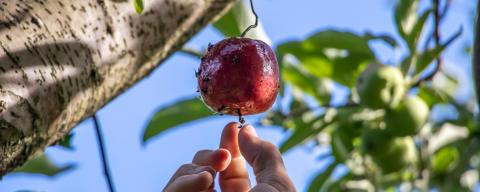Understanding the Lactation Curve in Dairy Cows
A dairy cow starts producing milk after giving birth and continues for approximately 300 days. The lactation cycle is a period between one calving and the next. The cycle is divided into four phases: 1) Early lactation from the 14 days of calving to 100 days, where milk production begins at a high rate and reaches a peak milk production within 40 to 70 days after calving. First-lactation cows typically reach peak milk production later than mature cows (between 70–100 days post-calving) and exhibit more persistent lactation curves, maintaining milk yields at a higher percentage of peak production through mid-to-late lactation. During this phase, a cow is deprived of dry matter intake (DMI) compared to her increased milk production, creating an energy deficit. This gap between energy intake and demand is called negative energy balance. The cow may lose weight to mobilize body fat to fulfill her energy demand for milk production. Body condition scoring (BCS) helps monitor body weight (BW) changes. One BCS (using the 1 to 5 system) is equal to 120 pounds (54.4 kilograms) of BW. Cows should not lose more than 0.5BCS (60 pounds [27.2 kilograms] of weight). Overall, during this phase, the milk production drives the cow's DMI. Mature cows reach peak milk earlier than first-lactation cows and typically produce about 25% more milk at peak compared to younger cows in the herd. To estimate total lactation yield potential, multiply peak milk by 200 (called the 200 rule). Milk (lb.) For example, if a Holstein cow peaks at 123 pounds (56 kilograms) of milk, multiplying this value by 200 results in an estimated milk production of 24,600 pounds (11,200 kilograms). For every unit increase in peak milk, there is a 200 to 250 pounds increase in whole lactation for the cow. 2) Mid lactation from 100 days of calving to 200 days, where the cow maintains her milk production as long as possible. In case milk production and components are declining too quickly, it suggests inadequate nutrition. The cow takes approximately 2 weeks to achieve her peak DMI. During this phase, cow increases DMI and weight gain. 3) Late lactation from 200 days of calving to 305 days, where milk production gradually declines along with DMI. The cow will gain weight to support the fetus and replenish body reserves lost in early lactation, and 4) Dry period starts after 305 days of lactation, when the cow stops producing milk or dries off. A cow is then given a 2 month resting period, especially the mammary gland, before repeating the lactation cycle. The recommended dry period is 45 to 60 days. The calf is increasing in size and developing, and BW gain can occur. To avoid metabolic disorders, cows should not gain more than 0.5BCS (60 pounds [27.2 kilograms] of weight) during this phase.
References
- Elanco Animal Health. 1997. Body Condition Scoring in Dairy Cattle. Greenfield, IN: Elanco.
- Hutjens, M. F. 2018. Feeding Guide: 4th Edition. W. D. Hoard & Sons Company.
- The Cattle Site. (n.d.). Managing cow lactation cycles. Retrieved April 29, 2025, from https://www.thecattlesite.com/articles/4248/managing-cow-lactation-cycles/
- Millen, D.D., Arrigoni, M.D.B. and Pacheco, R.D.L. eds., 2016. Rumenology (pp. 127-156). Berlin/Heidelberg, Germany: Springer.
- Toledo, I., & Halbritter, A. (2020). Dairy cows: Facts & figures [Fact sheet]. UF/IFAS Extension. https://sfyl.ifas.ufl.edu/media/sfylifasufledu/baker/docs/pdf/agriculture/ag-awareness/Dairy-Cow-Fact-Sheet-Final.pdf
- Holstein Foundation. 2017. Milking and Lactation Workbook. Brattleboro, VT: Holstein Foundation, Inc.
- Dairy Herd Improvement. "Understanding Lactation Curves in Dairy Cattle." Agromedia, http://agromedia.ca/ADM_Articles/content/DHI_lactcrv.pdf.
- Canadian Dairy Network. 2017. Increased Profits from Higher Lactation Persistency. https://www.cdn.ca/document.php?id=483
- University of Minnesota Extension. 2021. "Improving Peak Milk Yields." https://extension.umn.edu/dairy-milking-cows/improving-peak-milk-yields.
Photo Credit
- Cavalieri
Extension Services & Tools That Help NH Farmers Grow
Newsletters: Choose from our many newsletters for production agriculture
Receive Pest Text Alerts - Text UNHIPM to (866) 645-7010

